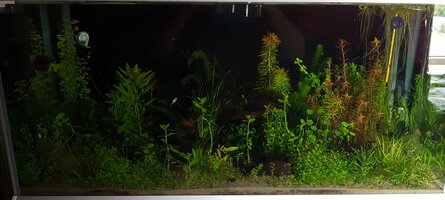Its time for an update innit

Ive been thread algae free for a little while now and its soo nice 🥰
The maintenance requirement for the tank just plummeted immediately as soon as the algae was gone, it really was a ton of work to constantly be fighting that algae.
As a result ive been enjoying my tank a whole lot more 😍
How, right? Well I did end up using API Algaefix. I have mixed feelings about that. It was part of the original 1-2-punch-ish plan. First removing any potent nitrogen source, which didnt seem to help any, and then also get plant growth better, which also didnt seem to deter this kind of green thread algae. So when I had the opportunity to move the fish out of the tank I did that and proceeded with the plan to use the algaecide while they were safely away.
Since there are many reports of fish death when using this substance and I had access to some literature that gives figures in ppm for various lifeforms, I started the dosing very low and worked my way up gradually, looking to find the lowest effective dosage. I was initially quite confused because the recommended dose of API Algaefix gives 1.2 ppm (Polixetonium chloride / Busan 77 etc), and some of the references I found indicated a much lower dosing should be required. Something approximately like: "diatoms and cyano at ~0.1ppm, green algae at ~0.01ppm, and vascular plants at ~1ppm."
So why would they (API) advise dosing 1.2 ppm? I pondered. Regardless I was determined to start low and work my way up.
I diluted a small amount of Algaefix from its original 4.5% strength to 0.1% strength to give me more control over the dosing.
I also carefully calculated the actual water volume of the tank, using the inside measurements of the glass panels, subtracting the entire substrate depth and then adding the volume of the two canister filters and one reactor I have. This gave me 214 liters of water.
Its very important to dose based on your ACTUAL water volume if using this.
I started the dose at 0.01 ppm and observed little to no effect.
The instructions have you dose every three days, so the next time I dosed closer to 0.1+ ppm (was 0.14 ppm in practice). The reason I went a bit higher than 0.1 ppm was just because that was the last of the diluted solution I had.
Im not 100% certain but I seem to recall the slimy thread algae looking a little less smooth than it usually did after this, and a bit more curly and wooly. A bit different in texture feel as well.
Third dosing was closer to the order of magnitude that the API dosing is. I debated between 0.5 or 0.8 but went for 0.8 ppm. This was very effective.
The thread algae in the tank stopped growing immediately and eventually died fully and completely fell of the plants after a few repeat treatments. The plants and mosses especially (the latter I was most worried about) seem completely unfazed.
Since the tank was empty I dont know how livestock would have felt about this, but the mini-ramshorn* type pest snails have been unaffected. Note that there is absolutely no doubt that this kills shrimp however.
(*I see these referred to as Gyraulus acronicus, Planorbis sp. and other names, im not sure what is the actual correct latin name for these.)
So it appears that this algaecide is indeed very effective at removing thread algae, even below the suggested dose. I suspect now that the reason the practical dose and the scientific literature reference doses differ so much is because of how "dirty" an aquarium is. I suspect that putting, lets say 0.1 ppm, into a sterile jar containing a small bit of algae covered moss, might produce different results than dosing 0.1 ppm into an aquarium system full of dirt, detritus, numerous surfaces and all manner of other things the chemical could react with. So it could be that the effective dose is influenced greatly by how many other things there are to react with in the water it is dosed into.
Its possible that I could have dialed back the dose from 0.8 slightly, to find the absolute minimum dose for my particular system. But the algae was dead and gone and I saw no reason to continue dosing any more.
Now begins the really interesting part though, the true test. Will the algae come back?
Pouring "chemicals" into a tank until stuff starts to die isnt very hard, almost anyone can do that.
As far as I see it, I have won this round of battle, but have I won the war? That remains to be seen.
The big question is if the slimy thread algae will just
come right on back again.
If it does, I think that could mean two things;
One; that the underlying cause was not fixed well enough, and the system is still supportive of too much thread algae growth.
If this species of green thread algae is in airborne spores or tap water, it will find its way back into the tank, and flourish again if the system has an opening for it.
Or two; if the green thread algae is not in airborne spores or tap water, but is reintroduced through water from the kitchen tanks, mossy cups or plants from shops, etc etc.
And it would then flourish again if the system has the right conditions for it.
Those are two ways I can imagine it coming back.
If it doesnt come back, I wont know if it was because this algaecide allowed the plants to regain the upper hand and the algae couldnt reestablish itself,
OR because the thread algae wasnt allowed to reintroduce itself to my system, and therefore had no chance to grow at all.
The latter would indicate that this particular species of green thread algae is something that could be avoided with thorough quarantine protocols, kinda like Planaria and things like that.
Not knowing fully which one is something I have known for a while I would have to live with.
Its a shame because I like knowing things. But the
sheer relief and renewed joy that this (possibly temporary break from the algae) has given me, has definitely been worth not knowing.
Im very interested to see what happens from here on. Dosing this stuff on the regular is not an option. I dont think I can perform the mental gymnastics to convince myself of that even if given enough time.
So if it comes back and I believe it hasnt been reintroduced from "contaminated" stuff from the kitchen, then I will need to continue to search for a way to defeat it. We shall see wont we

For now I am very much just enjoying the moment 🥰
But now onto something else 😊
I have toyed with the idea of having ramshorn snails for the first time. I got a few spotted ones for the kitchen tank, and have developed a decent population of the blue spotted ones over the past few months.
I had heard that ramshorn snails are better at eating BBA than other snails, but I havent been able to conclude about this myself yet. But it got my interest in them.
One thing I noticed however, is how many holes the frogbit has gotten in the tanks containing snails. Very moth-eaten, obviously and conspicuously eaten by something.
I suspected the ramshorn snails immediately, not just because there is conflicting information online about whether they may turn on healthy plants.
But also because all the other species of snails I have had before for many years, and never experienced this issue whatsoever.
So could it be the downside to ramshorn snails? That they might be harder on algae, but they are also harder on plants?
Different snail species have different tooth structure and strength, meaning they have different potential to do damage to live plant tissue.
Perhaps the all the critters were just not being fed enough as a whole, and something else was responsible for the damage, or a combination of species.
I didnt know if this was an effect of not enough food, or if this was something that was done despite getting enough to eat.
I am not interested in having critters that eat plants at this point in my life though, so I needed to find out for sure.
But there is of course this whole pesky "innocent until proven guilty" thing..

🤔
Cue
the Trial of the Snails.
I painstakingly separated Physella acuta (Bladder) snails and Ramshorn snails into two buckets.
Both buckets were furnished with mature oak leaf litter that by all accounts should make decent food for snails.
The ramshorn population was slightly bigger, so they got slightly more oak leaves in an attempt to mimimize the difference in that variable.
This isnt a double-blind-placebo-controlled-peer-reviewed-study though, just a 🦇💩crazy lady with two buckets of snails 🤪

So if I say its close enough for me then its close enough!
The buckets each got a handful of non-eaten frogbit, and got fed algae based fish food every few days. In other words, the snail subjects were not starving.
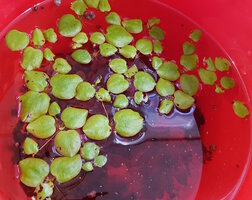
Ramshorn bucket
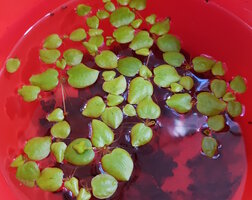
Bladder snail bucket
I gotta say, its not looking too good for the Ramshorns 😬
The Ramshorns have been caught in the act sitting under the leaves and visibly eating them, and the frogbit in the Physella bucket is pristine in comparison.
Based on this I dont think im gonna keep the ramshorns, even though they are pretty.
Any potential benefit the ramshorns might have against BBA is not really enough to counterbalance that they seem to quite like eating frogbit.
And I dont know which other plants they might also find too tasty to resist. So thats a bit of "evidence" from me, in case anyone else is also curious about ramshorn snails.
The Physella snails do a really good job of eating dead and decayed leaves without damaging any plants, so are the obvious and safe choice for me, plus I find them rather pretty in an understated sort of way.
Actually, after I removed all of these "pest" snails from the kitchen tank, the kitchen tank suddenly became a lot messier!
Now there is a lot of decaying plant material and dead leaves floating around that no one is doing anything about.
Snails may poop a lot, but their poop is much more broken down than a dead leaf. Id much rather have snail poop particles that can get carried to a mechanical filter I can clean, than whole bits of plant rotting in the water column.
I think people may seriously underestimate how much cleaning "pest" snails do. I certainly wouldnt be without them!
The kitchen quarantine tank started out very good, with the new fish being separated from the main system while undergoing anti-parasitic treatment.
Then things took a minor detour when the small groups of fish from the main tank joined the kitchen tank.
Having the main tank empty was essential for getting the courage to try out the algaecide without any innocent bystanders potentially getting hurt.
The anti-parasitic treatment weeks were complete, and aside from a lingering issue with the corydoras pauciradiatus, most of the fish were in good condition.
Then Life™ happened, and everything fell into chaos.
Corydoras hastatus, my favorite fish species that ive been looking for for years, appeared on the stockist list. Not many and the shops would have to order fast.
I was freaking out. The quarantine tank was full of fish and the pauciradiatus werent quite right, I didnt want to put any new fish in there. Oh god where would I put these?
The adult part of my brain (which is about the size of a raisin) tried to reason with the other part which was mostly incoherently screaming.
This is not a good time. We should sit this one out, not order any fish.
...But no way to know when they might appear again on the list. Could be a few weeks. Could be a few more years

Ack!
I placed an order through a shop a decent distance away, because they were able to give me a very good price on a group.
40 Corydoras hastatus, a really big group because dwarf corys sometimes arrive very poorly, and hastatus can be very shy and do best in larger groups.
The fish were gonna arrive in a week, and I was panicking trying to set up a second quarantine tank for them on such short notice. I could barely sleep from the worry and I am in the middle of a period of a lot of fatigue, so I couldnt get things up and running fast enough. And the worry was eating me inside, setting up a tank on such short notice. There would be no way to know that it was cycled/mature enough to accept so many fish without water quality issues. And the last thing I wanted was to lose any of these precious guys. They are so rare and to finally get them again.
After a few days of internal screaming it sank in that they had to go in the main tank.
Definitely not a part of the quarantine plan, but there was no other option.
A planted tank with a large water volume and mature (empty but mature) system with a ton of fast growing plants was a much much safer option than ANYTHING I could have thrown together last minute.
Screw the quarantine protocol, it will just have to be done!
According to stuff I was taught on norwegian groups about cycling, and the "traditional" view of cycling, the main tank should no longer "be cycled".
The impression one is given is that practically all the "filter bacteria" just clutch their pearls and die off en masse within hours after the last fish is removed from the tank.
From being on UKAPS for a while I knew some of what I was previously taught is incorrect, and especially that "a cycle" is not as black or white as many people see it.
But I didnt know to what extent my main tank would still be "cycled", or in much better words, mature enough to accept some fish.
It hadnt had fish in it for a while, and I havent been using Urea or Ammonia based fertilizer lately either, which might have emulated some fish stocking.
And I was gonna try to wing it by putting 40 most precious little fishies in there

I was terrified but there wasnt much I could do other than prepare to do a lot of water changes if necessary.
The day arrived and I drove to pick up the fish.
Some bad news, the stockist had run out and they had only sent 23 fish. One of the 23 was even a tetra that looks like hastatus.
Disappointed in that, but happy that I got some at all, and I felt fortunate that they seemed quite perky. I comfort-shopped some more Boraras brigittae to help make them less shy as a smaller group, and headed home with them.
I had almost forgotten why I love these fish so much. They are like little hummingbirds flittering and hovering through the water.
Their cool bluish grey color is beautiful against the plants and the black eyes make them absolutely adorable.
500% worth it.
They are wild caught so definitely need to go through a course of anti-parasitic treatments eventually, but in this case I dont mind spending the extra money to treat this large tank volume, it will be worth it in the end.
So the quarantine situation is a mess. But I think it will all get to a good point in the end, as long as I take my time and do things thoughtfully. For now my focus has been on giving them plenty of food and clean water.
Ive been measuring the important values like ammonia and nitrite with freshly opened test kits, and so far no readings despite feeding these little guys quite heavily.
One of the hastatus was sideways in the bag on arrival, but came the right way round during the gradual drip acclimatization.
Its still looking a little shabby at this moment, but from what I can tell its just this individual fish thats starting from a really poor place and has an uphill battle ahead of it.
The other fish are in really bright health for the journey they've been through, and dont appear to be struggling with anything.
So im just making sure some food lands near the poorly one and monitoring it for now. I suspect that the matter is out of my hands, beside providing what I can.
I think the rest might be up to the fish and its immune system to fight its way back, or not. If it becomes worse looking I will help it pass quickly instead of struggling its way out.
(I hate euthanizing fish, but sometimes its really the kindest option. Maybe I am transferring some of that fishes suffering over to me, and thats why it feels so terrible. But enough about that 🙂)
Since the introduction of the Corydoras hastatus and the new Boraras brigittae a lil while ago went so well (im really impressed at the stability of this planted tank),
I pulled the trigger just the other day on a group of Otocinclus sp. that I have been eyeing in one of the shops for a while.
That shop charges a bit more than the average for otos, but these specific ones have a really nice spotty mottled pattern to their backs that I think is really attractive.
Ive been interested in Otocinclus identification lately, and as some of you already know, actual "Otocinclus affinis" is a species that is very rarely offered for sale.
Shops tend to use this name for basically any oto, but it would be much more correct to label the fish as "Otocinclus sp." if they are unsure which one it is. Some stores are better at this than others.
Wholesalers tend to just send whatever kind of oto they have in stock, and sometimes a mix of species in the same shipment too. Exporters are not always much better, so its a bit chaotic all around.
The two most common otocinclus species in the aquarium trade are Otocinclus vittatus and macrospilus, but its not unheard of to find rarer species for sale as well under the general otocinclus label if one knows what to look for.
It doesnt help the matter any that a very large percentage of otocinclus photos on the internet are unintentionally mislabeled.
I think this group is likely to be macrospilus.
A little group photo of the hastatus, they are so cute when they shoal together, but being wild caught they are still a bit skittish and get frightened when they see movement outside the tank.
Im hoping they will get more accustomed to that as time passes 😊
Im gonna have to get this post online now, its taken me three days to put it together, not because its particularly long but im just not very productive these days 😅
Hope you enjoy the pictures, I will keep trying to take better ones as the fish get more used to the camera!
Im off to feed the fish 🥰


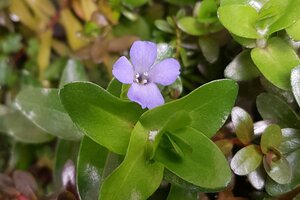
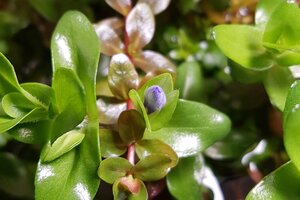
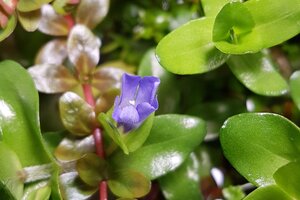
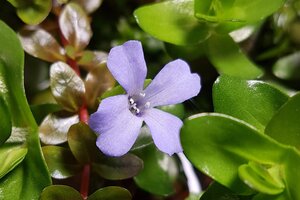
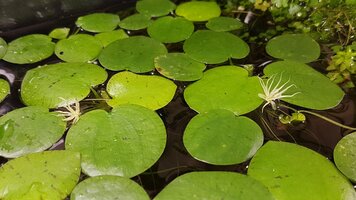

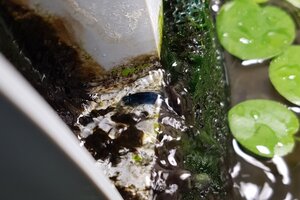
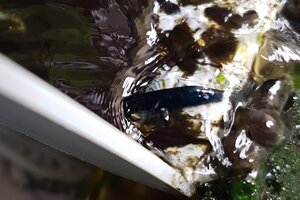
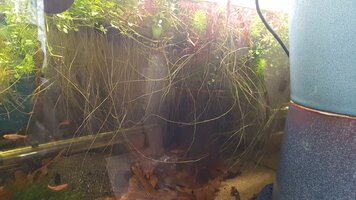
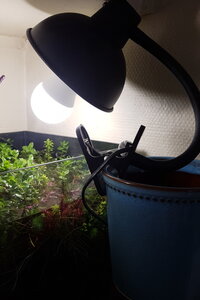

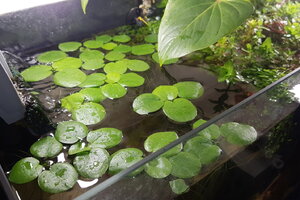
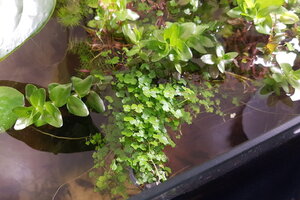
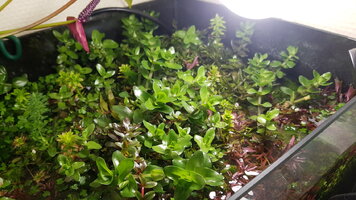
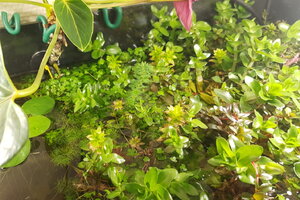
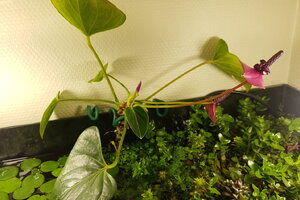
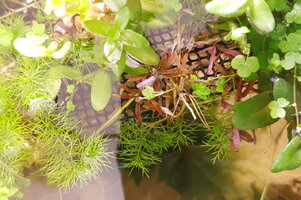
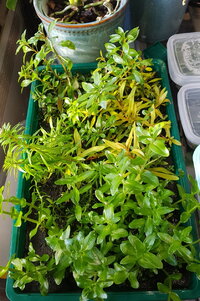
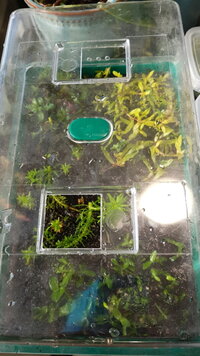
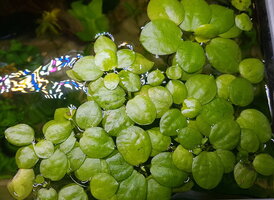
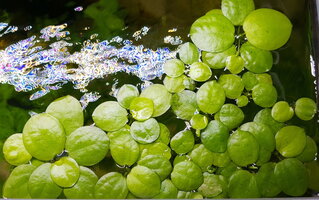
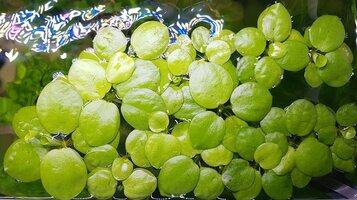
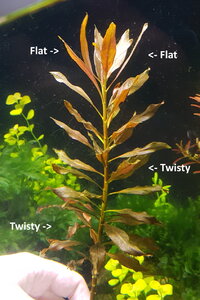
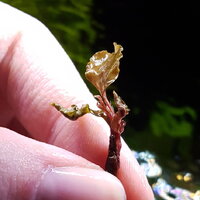
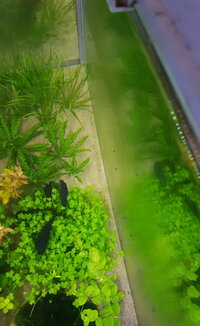

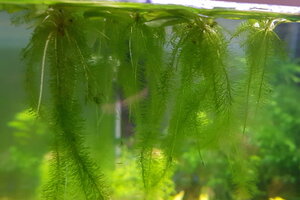

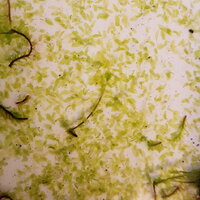
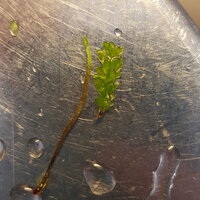
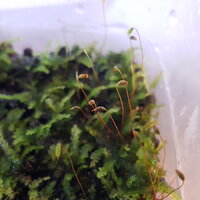
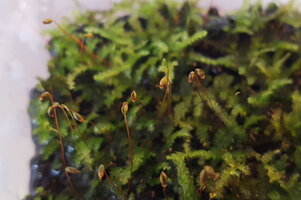
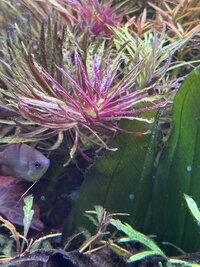
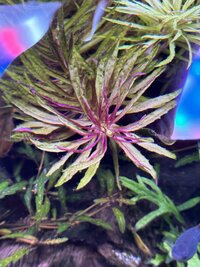
 🤔
🤔

 Ack!
Ack!